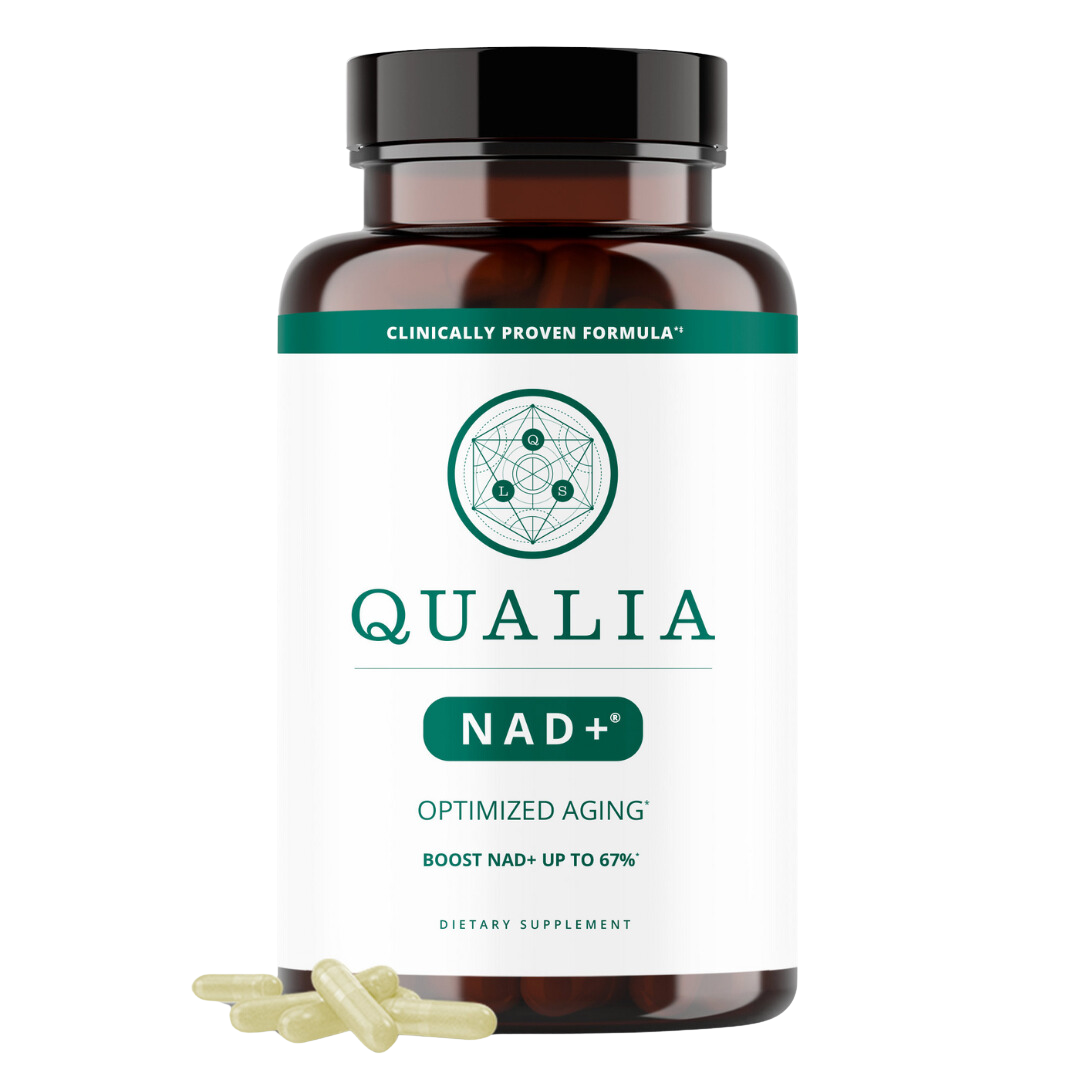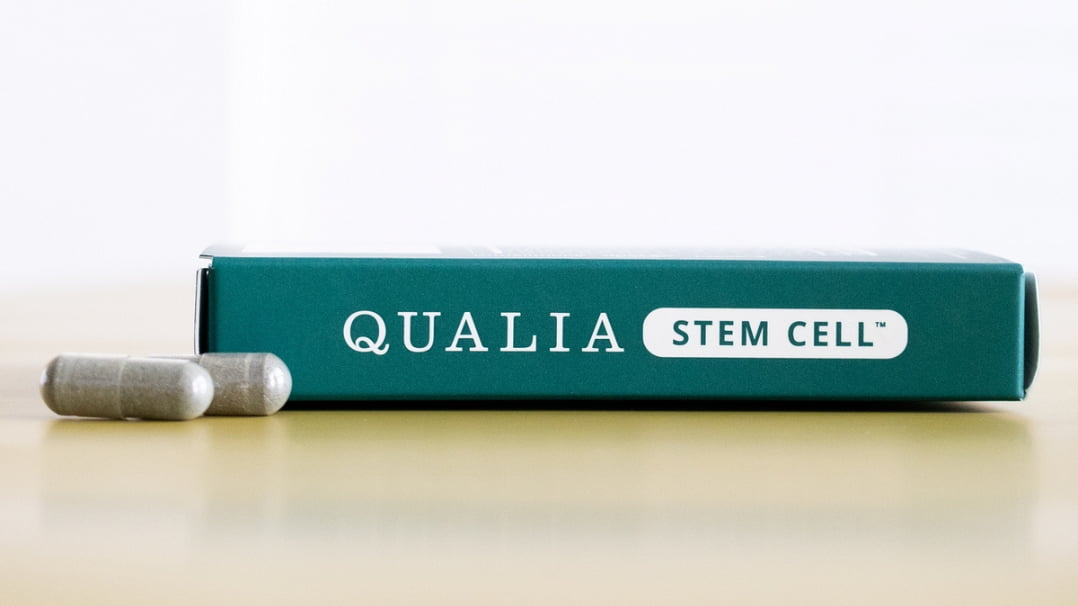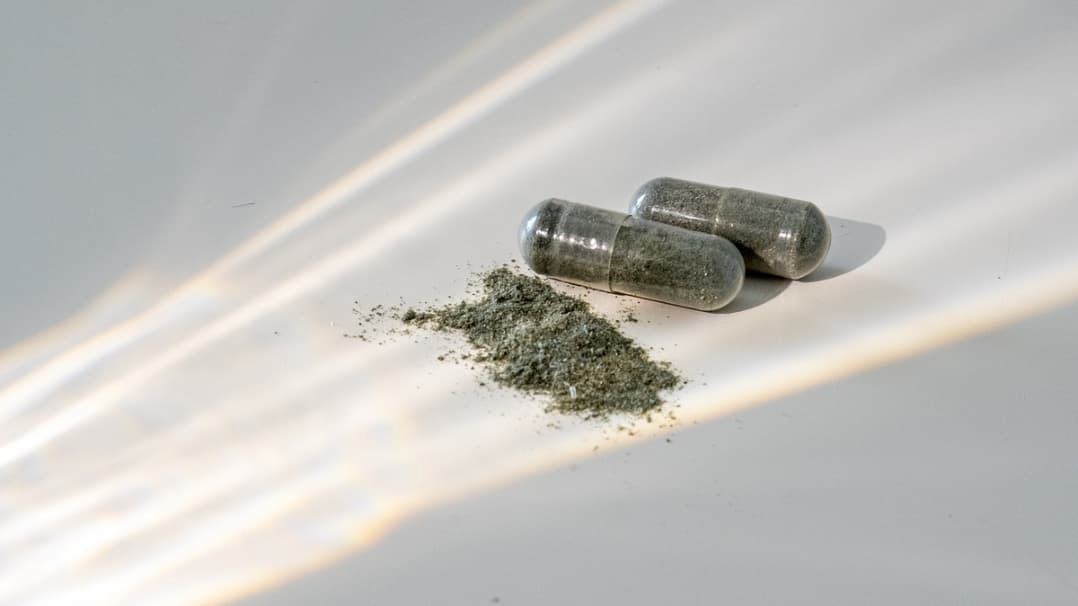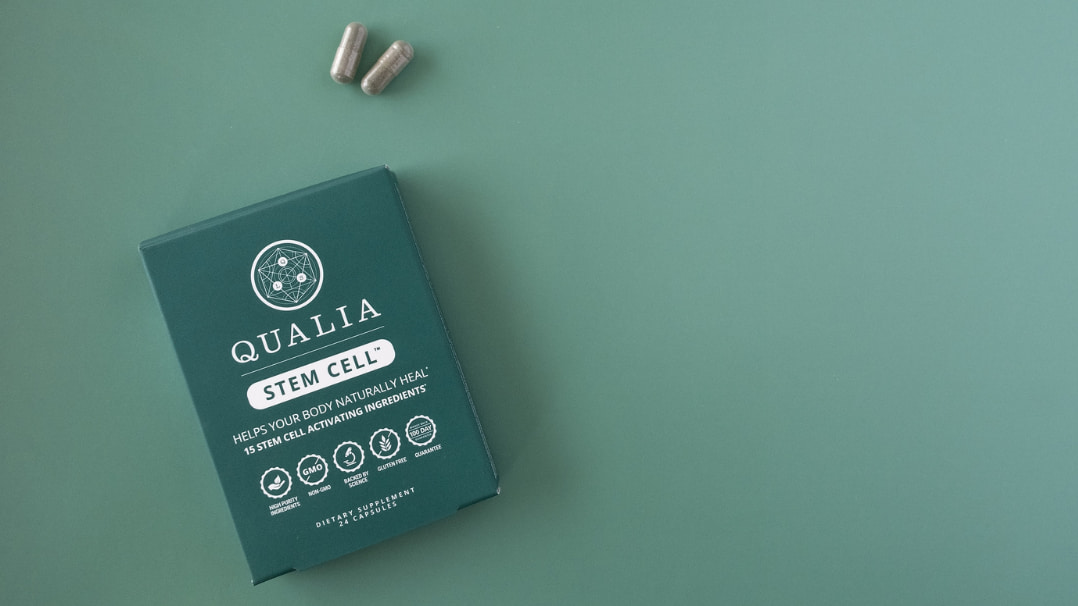Magnesium (from Aquamin® Mg)

Magnesium is one of the most abundant minerals in the body and plays a vital role in supporting the function of all living cells. It’s used in more than 300 enzymes. ATP (i.e., cellular energy) occurs complexed with ATP, so all enzymes utilizing ATP require magnesium to support their activity. The same is true for enzymes that synthesize DNA and RNA, magnesium is always involved. Magnesium also plays a large role in promoting healthy glucose metabolism (glycolysis). Because magnesium supports the electrical functions of cells (i.e., it’s an electrolyte), it’s necessary for muscle and nerve function. Magnesium has a number of functional roles that interact with stress [1]. Aquamin® Mg is a bioavailable source of magnesium that also contains lesser amounts of 71 other minerals (most of which are trace minerals) [2]. Aquamin® Mg has been studied for supporting gut microbiota [3].*
TOP BENEFITS OF MAGNESIUM
Supports sleep*
Supports mood*
Supports musculoskeletal health*
Supports cellular health*
QUALIA’S MAGNESIUM SOURCING
Aquamin® Mg is a natural source of magnesium derived from the clean sea waters off the Irish coast.
Magnesium from Aquamin® is standardized to contain not less than 33% magnesium (as magnesium hydroxide). It also supplies 72 minerals and trace minerals.
Magnesium from Aquamin® is a non-GMO, Vegan, Kosher certified, Halal certified, EU health certified, and Allergen free ingredient.
Aquamin® is a registered trademark of Marigot Ltd. of Cork Ireland.
MAGNESIUM FORMULATING PRINCIPLES AND RATIONALE
The Recommended Dietary Allowances (RDA) for magnesium in adults varies from 310 to 420 depending upon age and gender. Magnesium is one of the most common dietary insufficiencies—a majority of Americans of all ages ingest less magnesium from food than the recommended amount. The established upper limit (UL) of magnesium from supplements has been set at 350 mg for adults, which is lower than the RDA for some age groups and genders (this is in recognition that even diets poor in magnesium contribute some towards the RDA). Supplying even a modest amount of supplemental magnesium can help close this nutritional gap for most people [4]. The amount of magnesium, as Aquamin® magnesium alone or combined with other forms of magnesium, in a Qualia formula can vary depending on the role of magnesium in the formula and the formula’s intended health purpose. A serving size of a Qualia product may contain an amount of magnesium we intend to augment dietary intake (e.g., 8-20% of the RDA) or the full 350 mg UL amount.*
MAGNESIUM KEY MECHANISMS
Supports optimal metabolism and energy generation*
Supports the synthesis of ATP by ATP synthase in mitochondria* [5,6]
Part of a complex with ATP (MgATP) that is required for many rate-limiting metabolic enzymes* [7]
Supports the activity of rate-limiting enzymes involved in carbohydrate and lipid metabolism* [7,8]
Supports the activity of rate-limiting enzymes involved protein and nucleic acid synthesis* [7,8]
Helps maintain healthy insulin sensitivity* [9,10]
Supports cell signaling*
Supports healthy cellular sodium and potassium influx and efflux* [7]
Supports healthy cellular calcium influx and balanced calcium signaling* [7,8]
Supports the activity of adenylate cyclase - cyclic adenosine monophosphate (cAMP) synthesis* [11]
Supports cell structure*
Maintains stability of proteins, nucleic acids, chromosomes, and biological membranes* [7]
Supports healthy cardiovascular function*
Supports healthy cardiac muscle contraction and heart rhythm* [8,12]
Supports healthy vascular tone* [8,12]
Supports healthy platelet function* [8,13]
Supports brain function*
Supports hearing* [14–20]
Supports healthy neurotransmitter signaling and optimal neurological function* [8]
Supports the healthy activity of the glutamate N-methyl-D-aspartate (NMDA) receptor* [21,22]
Supports healthy glutamate dehydrogenase (GDH) enzyme function that converts glutamate to α-ketoglutarate, and vice versa* [23,24]
Supports healthy serotonin N-acetyltransferase function - an enzyme that is involved in the day/night rhythmic production of melatonin from serotonin* [25,26]
Supports healthy brain-derived neurotrophic factor (BDNF) function* [22,27,28]
Supports healthy neural stem cell proliferation* [29]
Supports healthy brain mitochondrial function* [29]
Supports a healthy mood*
Supports mental well-being* [30,31]
Supports healthy behavioral and physiological responses to stress* [28,32–35]
Supports sleep*
Supports optimal sleep quality* [36–39]
Supports healthy EEG and neuroendocrine responses during sleep* [40,41]
Supports sleep organization and regulation* [42–45]
Supports exercise tolerance in contexts of poor sleep* [46]
Supports muscle function*
Supports healthy muscle contraction* [8,47]
Supports optimal muscle strength* [48,49]
Supports the skeletal system*
Supports healthy bone metabolism/remodeling and optimal calcium absorption* [7]
Supports healthy calcitonin and parathyroid hormone activity* [7]
Supports optimal bone formation* [7]
Supports a healthy gut microbiota*
Supports a healthy composition of the gut microbiota* [3,50,51]
Complementary ingredients*
Commonly supplemented with calcium for bone support*
Supports vitamin D metabolism* [52]
B-complex vitamins and melatonin supplementation for sleep support* [53]
Zinc and melatonin supplementation for sleep support* [54]
Vitamin B6 for mood support* [55,56]
Hawthorn and California poppy for mood support* [57]
Antioxidant vitamins for hearing support* [58–60]
*These statements have not been evaluated by the Food and Drug Administration. This product is not intended to diagnose, treat, cure, or prevent any disease.
REFERENCES
[1]M.D. Cuciureanu, R. Vink, in: R. Vink, M. Nechifor (Eds.), Magnesium in the Central Nervous System, University of Adelaide Press, Adelaide (AU), 2018.
[2]V.D. Felice, D.M. O’Gorman, N.M. O’Brien, N.P. Hyland, Nutrients 10 (2018).
[3]E.K. Crowley, C.M. Long-Smith, A. Murphy, E. Patterson, K. Murphy, D.M. O’Gorman, C. Stanton, Y.M. Nolan, Mar. Drugs 16 (2018).
[4]Y.H. Ko, S. Hong, P.L. Pedersen, J. Biol. Chem. 274 (1999) 28853–28856.
[5]A.U. Igamberdiev, L.A. Kleczkowski, Front. Plant Sci. 6 (2015) 10.
[6]S.-M. Glasdam, S. Glasdam, G.H. Peters, Adv. Clin. Chem. 73 (2016) 169–193.
[7]W. Jahnen-Dechent, M. Ketteler, Clin. Kidney J. 5 (2012) i3–i14.
[8]S.Y. Cech, W.C. Broaddus, M.E. Maguire, Mol. Cell. Biochem. 33 (1980) 67–92.
[9]B.M. Altura, B.T. Altura, Magnesium 4 (1985) 226–244.
[10]M. Shechter, C.N. Merz, M. Paul-Labrador, S.R. Meisel, R.K. Rude, M.D. Molloy, J.H. Dwyer, P.K. Shah, S. Kaul, Am. J. Cardiol. 84 (1999) 152–156.
[11]Z. Joachims, A. Netzer, H. Ising, E. Rebentisch, J. Attias, G. Weisz, T. Günther, Schriftenr. Ver. Wasser Boden Lufthyg. 88 (1993) 503–516.
[12]J. Attias, G. Weisz, S. Almog, A. Shahar, M. Wiener, Z. Joachims, A. Netzer, H. Ising, E. Rebentisch, T. Guenther, Am. J. Otolaryngol. 15 (1994) 26–32.
[13]F. Scheibe, H. Haupt, B. Mazurek, O. König, Noise Health 3 (2001) 79–84.
[14]A. Gordin, D. Goldenberg, A. Golz, A. Netzer, H.Z. Joachims, Otol. Neurotol. 23 (2002) 447–451.
[15]B.I. Nageris, D. Ulanovski, J. Attias, Ann. Otol. Rhinol. Laryngol. 113 (2004) 672–675.
[16]J. Attias, S. Sapir, I. Bresloff, I. Reshef-Haran, H. Ising, Clin. Otolaryngol. Allied Sci. 29 (2004) 635–641.
[17]M.J. Cevette, D.M. Barrs, A. Patel, K.P. Conroy, S. Sydlowski, B.N. Noble, G.A. Nelson, J. Stepanek, Int. Tinnitus J. 16 (2011) 168–173.
[18]J.P. Ruppersberg, E. v. Kitzing, R. Schoepfer, Seminars in Neuroscience 6 (1994) 87–96.
[19]N. Abumaria, B. Yin, L. Zhang, X.-Y. Li, T. Chen, G. Descalzi, L. Zhao, M. Ahn, L. Luo, C. Ran, M. Zhuo, G. Liu, J. Neurosci. 31 (2011) 14871–14881.
[20]L.A. Fahien, J.K. Teller, M.J. Macdonald, C.M. Fahien, Mol. Pharmacol. 37 (1990) 943–949.
[21]B. Pochwat, G. Nowak, B. Szewczyk, Pharmacol. Rep. 68 (2016) 881–885.
[22]D.J. Morton, M.F. James, J. Pineal Res. 2 (1985) 387–391.
[23]A.J. Billyard, D.L. Eggett, K.B. Franz, Magnes. Res. 19 (2006) 157–161.
[24]B. Pochwat, M. Sowa-Kucma, K. Kotarska, P. Misztak, G. Nowak, B. Szewczyk, Psychopharmacology 232 (2015) 355–367.
[25]J. Petrović, D. Stanić, Z. Bulat, N. Puškaš, M. Labudović-Borović, B. Batinić, D. Mirković, S. Ignjatović, V. Pešić, Horm. Behav. 105 (2018) 1–10.
[26]G.A. Eby, K.L. Eby, Med. Hypotheses 67 (2006) 362–370.
[27]N.B. Boyle, C. Lawton, L. Dye, Nutrients 9 (2017) 429.
[28]E. Poleszak, B. Szewczyk, E. Kedzierska, P. Wlaź, A. Pilc, G. Nowak, Pharmacol. Biochem. Behav. 78 (2004) 7–12.
[29]L. Fromm, D.L. Heath, R. Vink, A.J. Nimmo, J. Am. Coll. Nutr. 23 (2004) 529S–533S.
[30]I.N. Iezhitsa, A.A. Spasov, M.V. Kharitonova, M.S. Kravchenko, Nutr. Neurosci. 14 (2011) 10–24.
[31]E. Poleszak, Pharmacol. Rep. 60 (2008) 483–489.
[32]M. Hornyak, U. Voderholzer, F. Hohagen, M. Berger, D. Riemann, Sleep 21 (1998) 501–505.
[33]M. Hornyak, P. Haas, J. Veit, H. Gann, D. Riemann, Alcohol. Clin. Exp. Res. 28 (2004) 1702–1709.
[34]B. Abbasi, M. Kimiagar, K. Sadeghniiat, M.M. Shirazi, M. Hedayati, B. Rashidkhani, J. Res. Med. Sci. 17 (2012) 1161–1169.
[35]N.R. Maor, M. Alperin, E. Shturman, H. Khairaldeen, M. Friedman, K. Karkabi, U. Milman, JAMA Intern. Med. 177 (2017) 617–623.
[36]S. Poenaru, S. Rouhani, J. Durlach, N. Aymard, F. Belkahla, Y. Rayssiguier, M. Iovino, Magnesium 3 (1984) 145–151.
[37]L. Popoviciu, D. Delast-Popoviciu, R. Delast-Popoviciu, I. Bagathai, G. Bicher, C. Buksa, S. Covaciu, E. Szalay, Rom. J. Neurol. Psychiatry 28 (1990) 19–24.
[38]H. Depoortere, D. Françon, J. Llopis, Neuropsychobiology 27 (1993) 237–245.
[39]D. Chollet, P. Franken, Y. Raffin, J.G. Henrotte, J. Widmer, A. Malafosse, M. Tafti, Behav. Genet. 31 (2001) 413–425.
[40]K. Held, I.A. Antonijevic, H. Künzel, M. Uhr, T.C. Wetter, I.C. Golly, A. Steiger, H. Murck, Pharmacopsychiatry 35 (2002) 135–143.
[41]H. Murck, A. Steiger, Psychopharmacology 137 (1998) 247–252.
[42]K. Tanabe, A. Yamamoto, N. Suzuki, N. Osada, Y. Yokoyama, H. Samejima, A. Seki, M. Oya, T. Murabayashi, M. Nakayama, M. Yamamoto, K. Omiya, H. Itoh, M. Murayama, Japanese Circulation Journal 62 (1998) 341–346.
[43]J.D. Potter, S.P. Robertson, J.D. Johnson, Fed. Proc. 40 (1981) 2653–2656.
[44]L.R. Brilla, T.F. Haley, J. Am. Coll. Nutr. 11 (1992) 326–329.
[45]L.J. Dominguez, M. Barbagallo, F. Lauretani, S. Bandinelli, A. Bos, A.M. Corsi, E.M. Simonsick, L. Ferrucci, Am. J. Clin. Nutr. 84 (2006) 419–426.
[46]B. Pyndt Jørgensen, G. Winther, P. Kihl, D.S. Nielsen, G. Wegener, A.K. Hansen, D.B. Sørensen, Acta Neuropsychiatr. 27 (2015) 307–311.
[47]G. Winther, B.M. Pyndt Jørgensen, B. Elfving, D.S. Nielsen, P. Kihl, S. Lund, D.B. Sørensen, G. Wegener, Acta Neuropsychiatr. 27 (2015) 168–176.
[48]Q. Dai, M.J. Shrubsole, R.M. Ness, D. Schlundt, Q. Cai, W.E. Smalley, M. Li, Y. Shyr, W. Zheng, Am. J. Clin. Nutr. 86 (2007) 743–751.
[49]G. Djokic, P. Vojvodic, D. Korcok, A. Agic, A. Rankovic, V. Djordjevic, A. Vojvodic, T. Vlaskovic-Jovicevic, Z. Peric-Hajzler, J. Vojvodic, D. Matovic, G. Sijan, U. Wollina, M. Tirant, V.T. Nguyen, M. Fioranelli, T. Lotti, Open Access Macedonian Journal of Medical Sciences 7 (2019) 3101–3105.
[50]M. Rondanelli, A. Opizzi, F. Monteferrario, N. Antoniello, R. Manni, C. Klersy, Journal of the American Geriatrics Society 59 (2011) 82–90.
[51]M.C.D. Souza, M.C. De Souza, A.F. Walker, P.A. Robinson, K. Bolland, Journal of Women’s Health & Gender-Based Medicine 9 (2000) 131–139.
[52]V.V. Kalinin, E.V. Zheleznova, T.A. Rogacheva, L.V. Sokolova, D.A. Polianskiĭ, A.A. Zemlianaia, D.M. Nazmetdinova, Zh. Nevrol. Psikhiatr. Im. S S Korsakova 104 (2004) 51–55.
[53]M. Hanus, J. Lafon, M. Mathieu, Curr. Med. Res. Opin. 20 (2004) 63–71.
[54]C.G. Le Prell, L.F. Hughes, J.M. Miller, Free Radic. Biol. Med. 42 (2007) 1454–1463.
[55]J.C. Alvarado, V. Fuentes-Santamaría, M.C. Gabaldón-Ull, J.M. Juiz, Front. Neurosci. 12 (2018) 527.
[56]C.G. Le Prell, P.M. Gagnon, D.C. Bennett, K.K. Ohlemiller, Transl. Res. 158 (2011) 38–53.








